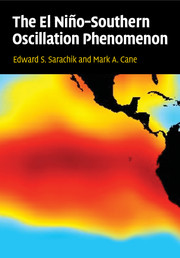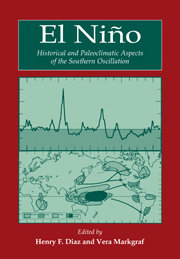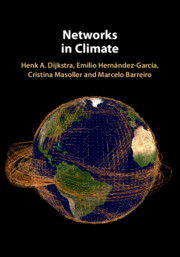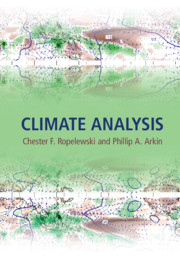The El Niño-Southern Oscillation Phenomenon
Many climatic extremes around the globe, such as severe droughts and floods, can be attributed to the periodic warming of the equatorial Pacific sea surface, termed the El Niño or Southern Oscillation (ENSO). Advances in our understanding of ENSO, in which Edward S. Sarachik and Mark A. Cane have been key participants, have led to marked improvements in our ability to predict its development months or seasons, allowing adaptation to global impacts. This book introduces basic concepts and builds to more detailed theoretical treatments. Chapters on the structure and dynamics of the tropical ocean and atmosphere place ENSO in a broader observational and theoretical context. Chapters on ENSO prediction, past and future, and impacts, introduce broader implications of the phenomenon. This book provides an introduction to all aspects of this most important mode of global climate variability, for research workers and students of all levels in climate science, oceanography and related fields.
- Takes an incremental approach, building to the most complete version of the subject matter now available, written by scientists who helped form modern El Niño or Southern Oscillation (ENSO) theory
- Places ENSO in the context of its global consequences, explaining its impacts in the past and probable future problems
- Background on atmosphere and ocean structure and dynamics provides complete account of issues underlying ENSO theory
Reviews & endorsements
"This book is an excellent complement to Philander’s 1990 textbook...The writing has plenty of humor, is self-deprecating, and is easy to read. I found the book to be an excellent text for graduate teaching, and I plan on using it as required text in the ENSO course I will teach this coming Fall." - Ben Kirtman, Bulletin of the American Meteorological Society, July 2011 issue
Product details
March 2018Paperback
9781108445702
383 pages
245 × 169 × 19 mm
0.65kg
Available
Table of Contents
- Preface
- 1. Preview
- 2. The observational basis
- 3. The equations of motion and some simplifications
- 4. Boundary layers on both sides of the tropical ocean surface
- 5. Atmospheric processes
- 6. Ocean processes
- 7. ENSO mechanisms
- 8. ENSO prediction and short term climate prediction
- 9. ENSO, past and future, or ENSO by proxy and ENSO in the tea leaves
- 10. Using ENSO information
- 11. Postview
- Appendix 1. Some useful numbers
- Appendix 2. The parabolic cylinder functions
- Appendix 3. Modal and non-modal growth
- References
- Index.








